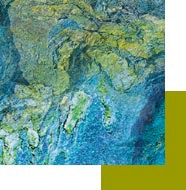Business and industry in Norway - 1) Raw-materials-based industries
Brosjyre/veiledning | Dato: 26.06.2001 | Nærings- og fiskeridepartementet
Opprinnelig utgitt av: Nærings- og handelsdepartementet
Natural resources, such as oil, waterfalls, fish, vast expanses of forests and countryside, and a rich variety of commercially interesting types of rock have formed the basis for considerable value creation in Norway. Historically speaking, companies have been located near to natural resources. Cornerstone companies and small communities have grown up around these.
Rich supplies of hydropower laid the foundations of Norway’s energy-intensive industry. Today, almost a third of the hydropower generated is used to produce metals, chemicals and wood products.
Norway has large forest resources that were first used as the foundation for the wood-product industry and later for the pulp and paper industry. The forestry industry was Norway’s largest export industry up until the middle of the 20th century, and there is still a great deal of industrial activity in the wood-product and pulp and paper industries.
Norway’s agricultural resources have been used in the food, beverages and tobacco industry since the end of the 19th century. Rich fish resources have formed the basis of the fish-processing industry along the entire Norwegian coast, and fish farming has made Norway one of the world’s leading salmon exporters.
Norway’s large mineral deposits form the basis of several types of industry, and there is a long tradition of extracting various ores from metalliferous rocks.
Theoil and gas deposits in the North Sea have made Norway into one of the world’s leading oil and gas exporters and brought it correspondingly high revenues. The petroleum industry has also given rise to a great deal of activity in the processing, supplier and service industries.
|
|
|
| |||
Norwegian industry1) Raw-materials-based industries | ||||


